Blum&Poe: Sunrise, Sunset
a brief history of repetition, units of measure and dumb fluctuations in value.
See Chapter IX: The island of Hydra, June 21, 2022.
I.
You can measure the significance of a gallery the same way you can measure an artist’s. The value of either is in how much they moved the needle.
Blum & Poe moved the needle for artists who moved the needle. They gave Lee Ufan his first LA show in 2010, and subsequently became the United States’ premiere importers of Mono-ha and Dansaekhwa. In the ’90s, they came out of the gate with a specific brand of cool guy gallery with an eye for star potential, launching Takashi Murakami, Yoshitomo Nara, Henry Taylor and Mark Grohtjahn into commercial stardom. They embraced pop culture with a finely tuned palate for the high-low. I interviewed Kim Kardashian at Blum & Poe the night they showed a Kanye West sculpture (in 2016, before he had devolved into a rabid anti-semitism), then in 2022, I watched a live set by Ghostface Killah at the gallery as it feted Alvaro Barrington’s LA debut.*
*A night to remember for sure. Everyone in the audience took home a gold-speckled, THC-infused brownie, courtesy of Ghost’s cannabis brand Killah Bee.
Then on July 1, 2025, Tim Blum said he would be sunsetting the gallery, abruptly pulling the rug from under his artists and employees. I know at least one artist who left his gallery to join Blum’s and never got a show. I also know of at least one former employee raising money for an upcoming surgery, which you can support at her GoFundMe.
BLUM’s closure also feels like a loss specific to Los Angeles—the end of a homegrown institution that made it into the major leagues. Tim Blum & Jeff Poe founded their gallery in Santa Monica in 1994, and when they moved to Culver City in 2003, they became the center of gravity for the gallery district that grew around them.
Tech companies, however, eventually started moving into the neighborhood and pricing the galleries out. To be clear, Amazon’s arrival to Culver City in 2017 is not what closed Blum & Poe, but it did mark the beginning of an end to a certain cultural and economic era. After Poe left the gallery in 2023, every search query for Blum & Poe would be automatically redirected to BLUM. Tim Blum was one of the last ones standing in Culver City. And then one day he wasn’t.
A touch of Grade-A shade, via Annie Armstrong at artnet:
“It’s really sad and not great for the art market to see a longstanding gallery close,” advisor Ralph DeLuca said. “I hope this serves as a warning sign to other galleries to not expand too fast, not raise prices too high, and be a little easier to do business with.”
II.
Cheap credit, i.e. debt, is like jet fuel to an economy. During periods of low interest rates, business soars, but it also dips when interest rates rise. From there, each successive dip requires more and more fuel in the tank to achieve and exceed the previous high. This is the flight path of the short term debt cycle, which hedge fund guru Ray Dalio describes perfectly here. It rises and falls over the course of roughly eight years, perfectly coinciding with the art world’s booms and busts.
Another useful analogy is to think of cheap credit as crack cocaine, a habit of diminishing returns. It drives speculators to recklessness—VCs, crypto bros, and art collectors alike. Alan Greenspan coined the term irrational exuberance for this behavior during the dotcom bubble of the ’90s. And contrary to the capitalist mantra of endless growth, this behavior cannot last forever. That’s where the long term debt cycle concludes: once the cost of debt outweighs its returns, business comes crashing down to earth.
III.
As I’m writing this, Adam Lindemann just announced he would be closing Venus Over Manhattan. This is the domino effect of a big gallery closing: it grants permission for everyone else to admit they’ve been wanting to close too.
But Laurel Gitlen has lived through at least three art market contractions, and not all were doom and gloom. While the 2008 financial collapse shuttered 25 Chelsea galleries in a single year, it also reset the market in favor of ambitious and emerging Lower East Side galleries like hers.
From a 2024 interview I did with Laurel Gitlen, who ran her eponymous gallery on the LES gallery from 2008 to 2016:
Think of it this way: when the great meteor struck the earth, the mass extinction of the dinosaurs made it possible for mammals to thrive. A meteor strikes the art world once a decade.
With the 2008 crash, Josh Baer predicted the end of art world speculation, but for better or worse, it just kept growing. The following decade was defined by ZIRP, the Fed’s zero interest rate policy to resuscitate the post-recession economy. The cheap cashflow launched startups like Uber, DoorDash and Airbnb into explosive growth, and naturally the art world followed suit. Gitlen remembers 2010 to 2013 as a “super-strong” period of “aggressive expansion” for the LES, having upgraded her space from 500 square feet to 2000.
But in 2015, due to factors including the Fed’s tightening its monetary policies, business inevitably slowed. Another meteor struck the art world, and this time Gitlen’s operations were too large to avoid the impact. Her overhead—rent, storage, employees, shipping—“had gotten to the point where if I sold nothing that month, I’d go $50,000 into debt.” Precarity had sucked all the pleasure from the room. In 2016, as soon as a larger gallery offered to sublease her space, she accepted, paid off her bills, and shut her doors.
IV.
Anything in excess declines in value. The devaluation of currency is called inflation, and during the abundant cashflow of 2020 to 2022, both money and art underwent a kind of spiritual devaluation, too. Collectors with money to burn were paying totally batshit prices for entry-level art. See: $30,000 for an Anna Weyant painting. Tim Blum was able to snag one from his own gallery in 2021, then flip it at Sotheby’s for $1.6 million in 2022.
No shade to Anna Weyant, but $1.6 million is not a price determined by artistic value or historical relevance—just hype, previous auction records, and the fact that too much money was in circulation.
This is irrational exuberance in a nutshell. I swear, prolonged exposure to excess capital will make you so dumb.
FUN FACT:
Bitcoin was founded in August 2008, just a few weeks after this Onion headline:
V.
For more Grade-A shade, I highly recommend this 2017 Artspace essay by Dylan Kerr, the most searing and elegant string of insults I’ve ever read.
It’s about a recent genre of superbly bland art he calls Frictionless Paintings, citing artists like Nicolas Party, Jordan Kasey and Avery Singer. He describes their common traits as “silky-smooth 3D masses that appear strangely hollow” with “no rough edges to snag on” and “little in the way of overt personality.” Lacking identity, depth and emotional resonance, these are essentially “portraits of no one,” and I’d add Julie Curtiss and Austin Lee to this list. if we expand this definition to include abstraction and sculpture, Mariana Simão and Thomas J. Price too.
This is the aesthetic of financial optimization, a consequence of downgrading the value of art to currency. (I’ve also tried making “quiet luxury” a thing.) To glide along the commercial path of least resistance, both Quiet Luxury and Frictionless Painting take no artistic risks and pose no challenges to the viewer’s existing worldview. This is antithetical to the purpose of art—art with no tension is just decoration—but it’s ideal stuff for the collector whose frictionless lifestyle has made them a little soft. Probably a little dumb, too.
Where the goal of investing in art used to be growing the artist’s practice, it’s now to extract the greatest returns, wringing the life out of it in the process. This is all a product of a self-reinforcing cycle: art no one put in any effort to make, for viewers that make no effort to look.
VI.
From “Chelsea’s Subprime Moment,” Oct. 5, 2007:
Each time a market bounces back, it’s inevitably higher-leveraged and more unhinged than the last. Jeff Poe must’ve gone through the cycle at least four or five times before he couldn’t bear it anymore. He went on Josh Baer’s podcast (twice) and said the art world had been swallowed by entropy: “Criticism is out the fucking door. Nobody gives a shit or reads. Artist careers last five or six months.” The former thrills of selling had given way to the perfunctory task of placing. Everything was “lukewarm,” he said. Everything was “boring as hell.”
Laurel Gitlen returned to the art world just as Poe was leaving, reopening her gallery in 2022. It was a period of severe collective brain rot, where the most unmemorable galleries you knew could suddenly open second and third locations. Marina Abramoviç, Murakami and Taco Bell were making NFTs. The administration was in active denial about the rapid decline in our quality of life. And at that point, we weren’t even aware how much tech was actively making us dumber. Today we can barely even read.
For Gitlen, it was immediately clear that the patrons of the previous decade—the ones who supported challenging practices, including video and sculpture—were aging out of collecting and not being replaced. The entire pace and culture of of the industry had fundamentally changed. “The market was so focused on painting,” Gitlen told me last year, “and the attention cycle for an artist seemed to only be one show long.”
“Things are much worse now than they were in 2016,” she added. “The market was already diminished by the fact that people were only selling very commercial work, and now even that’s not a sure thing.”
VII.
a collector reflects on the effects of low interest rates on his personal wealth:
VIII.
Questions for Tim Blum:
how much time elapsed between deciding to close and announcing it
what’s going to happen to the new york space you never opened
how much was your overhead when you closed
do you have remaining debts to clear
how are you supporting the employees who lost their jobs
how are you easing the transition for your artists who lost their gallery
do you share information about their collectors with them
why close so abruptly
how did business change after Jeff’s departure
did you rewrite your whole wikipedia page as soon as he left
remember that time you hosted that enormous survey of that random artist you never mentioned ever again; is it because his son is the founder of EarthLink
To add your own questions
IX.
I have the fondest memories of June 21, 2022. On the island of Hydra, visiting collectors gathered at the foot of their golden idol, attempting to summon their god of wealth and abundance. And there in the temple of Dakis Joannou, Jeff Koons finally did appear. That evening and again and for the next several days, we basked in the warmth and abundance of the prolonged sun. These were the longest day of the year, and we were blissfully unaware that our days were already growing shorter. Winter seemed so far away.
FUN FACT:
If we measure in today’s dollars, the total value of the art market peaked in 2014, right before the size of American houses.
X.
Our shallow memories do us the great disservice of forgetting very recent history. Everything happening today has happened before. Repetition is the way we measure the passage of time: A single rotation on the earth’s axis is called a day, and a voyage around the sun is called a year. The path it retreads is never a perfect circle, but a widening spiral quietly inching forward. The gallerist repeats the cycles of boom and bust until the hill becomes too steep to climb. You inhale and you exhale until your dying breaths.
At the onset of the pandemic in 2020, the Fed dropped interest rates once again to near-zero. Then after two years of absolutely unhinged behavior, they raised them from .25% in March 2022 to 5.25% in July 2023, sending our societal lifestyle creep into an acute state of withdrawal. We didn’t know it at the time, but that incremental shift quietly marked a major inflection point in every aspect of our lives, cultural, intellectual, political and economic.
Declining, shrinking and falling is exactly the time to remind ourselves of the origins of art, and how it functioned before it was downgraded to a failed form of currency. In ways beyond words alone, art captured the highs and lows of our shared human experience, summoning the solace and spirit of the divine to this otherwise meaningless ride.
“Even if you are not ready for day
it cannot always be night.”
— Gwendolyn Brooks, “Speech to the Young,” 1991



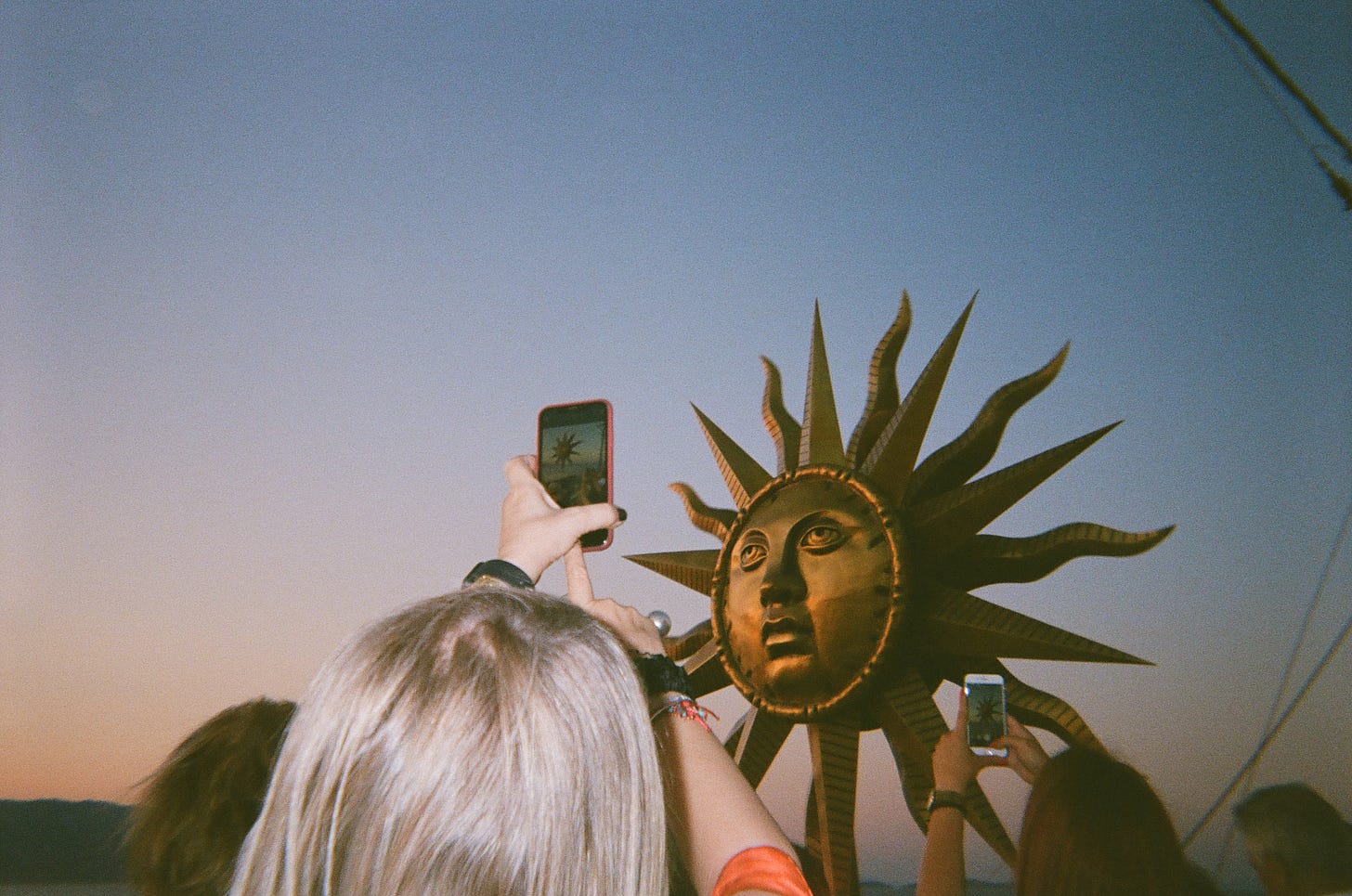
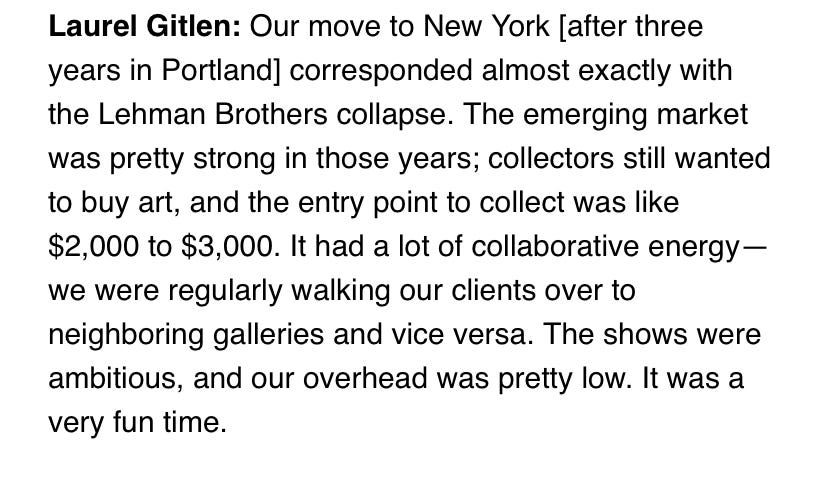
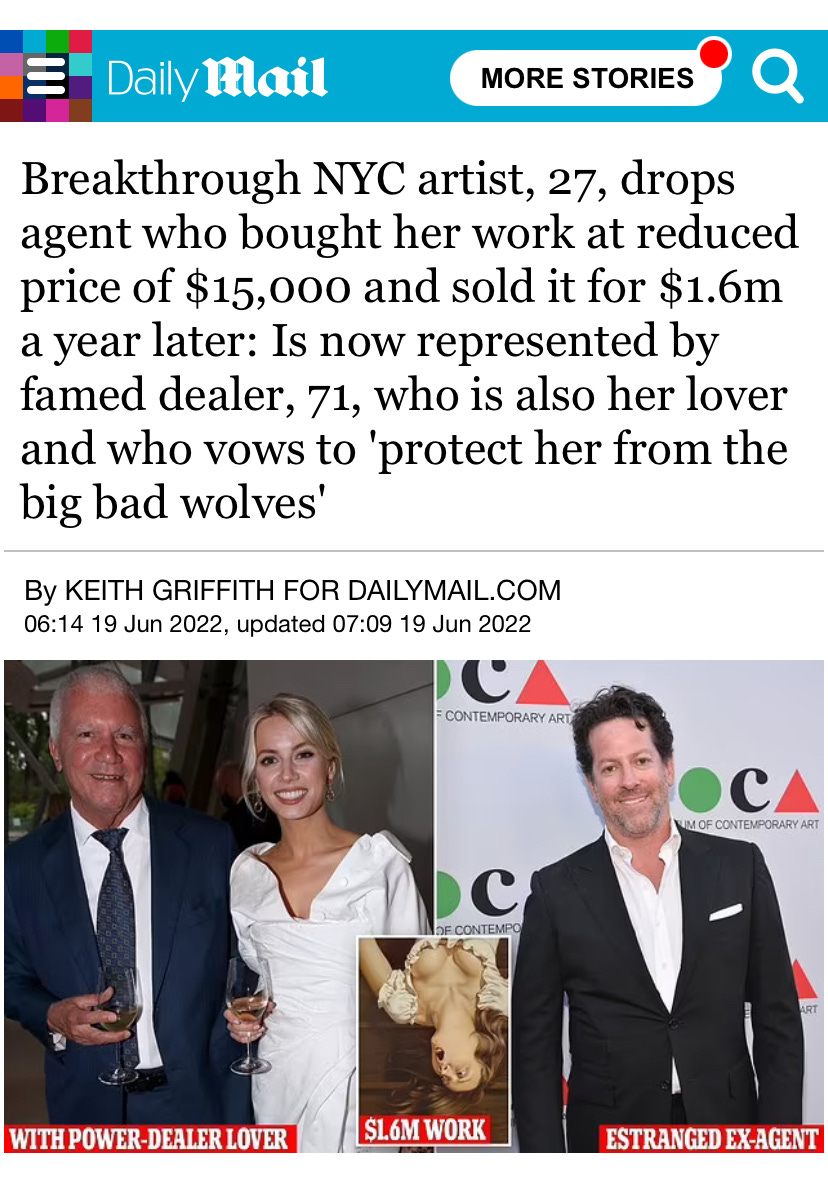
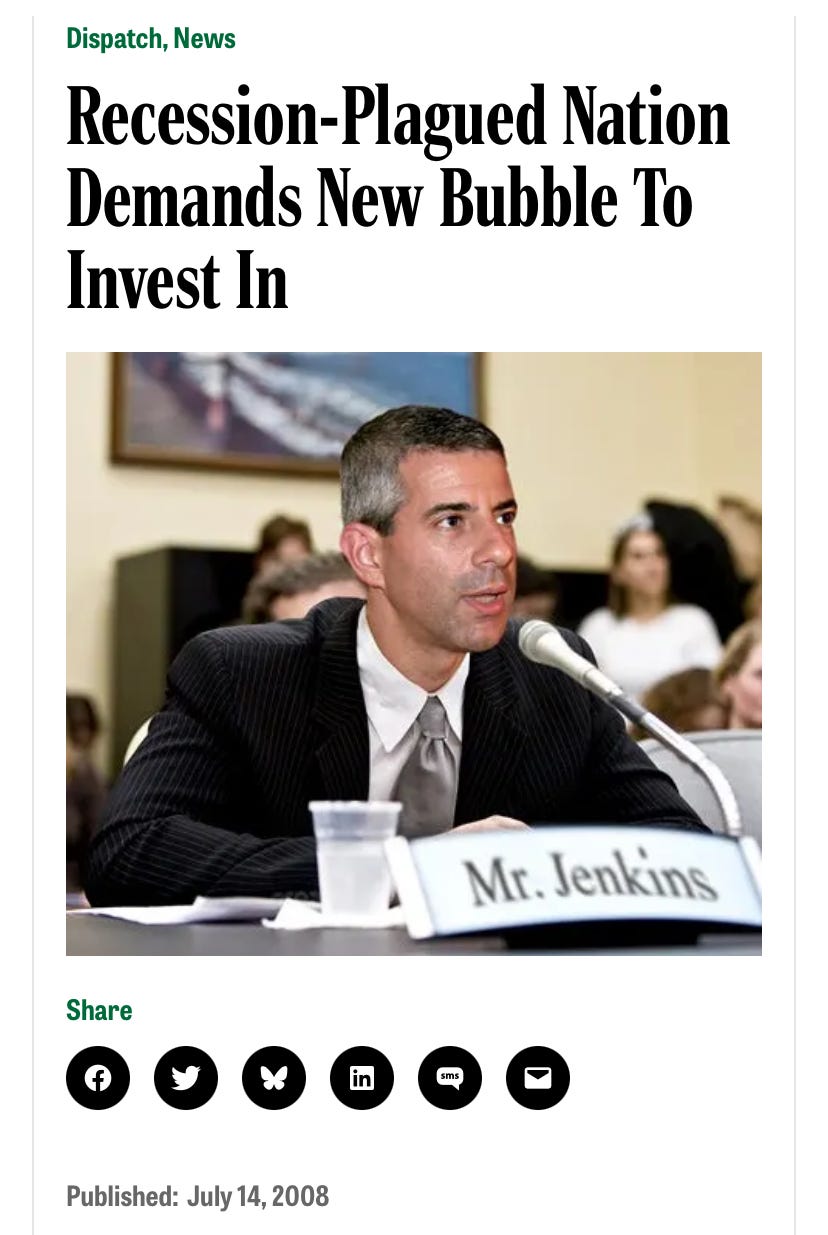
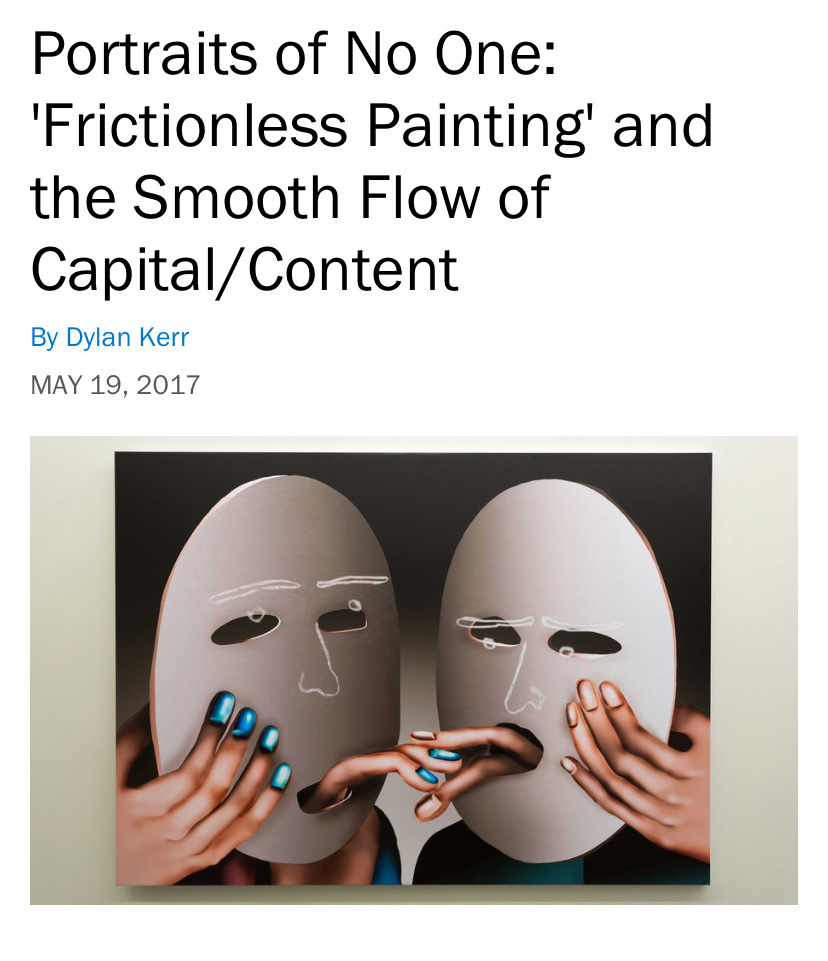
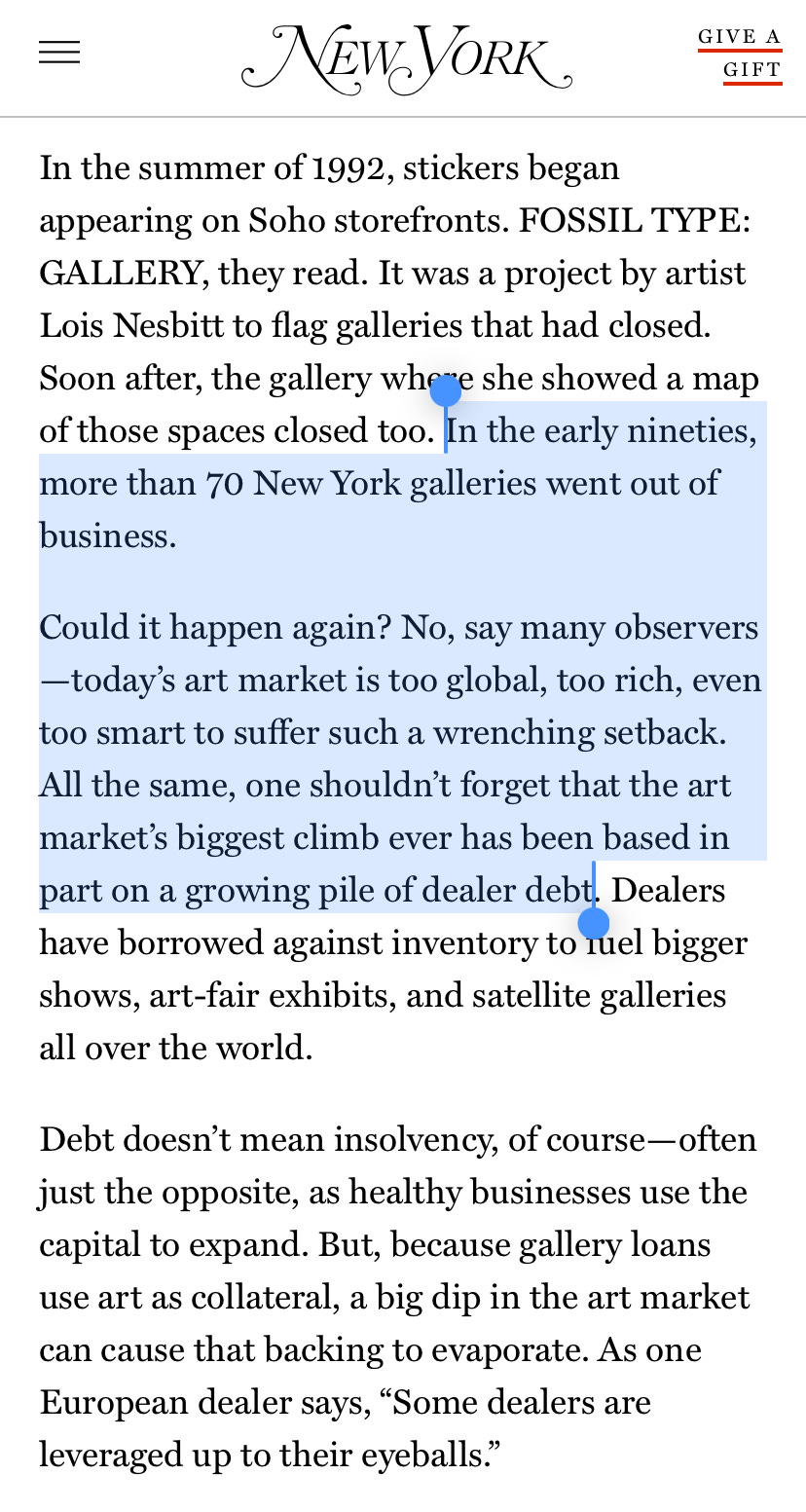
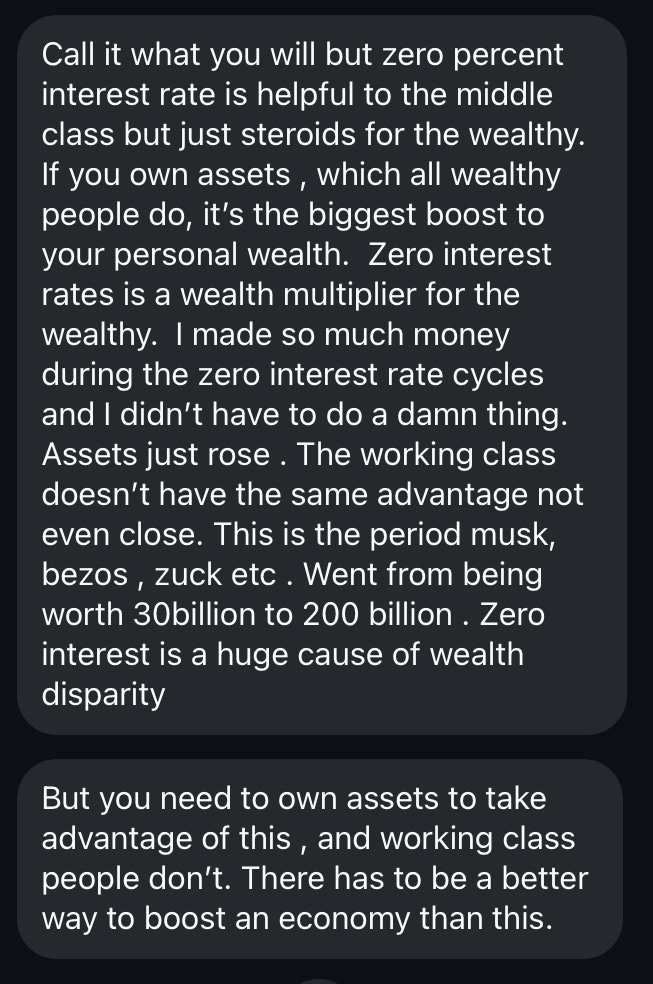


Fantastic piece, thank you!
PS: Please consider an alternative to Venmo which doesn't exist outside the US..
So good Janelle!!